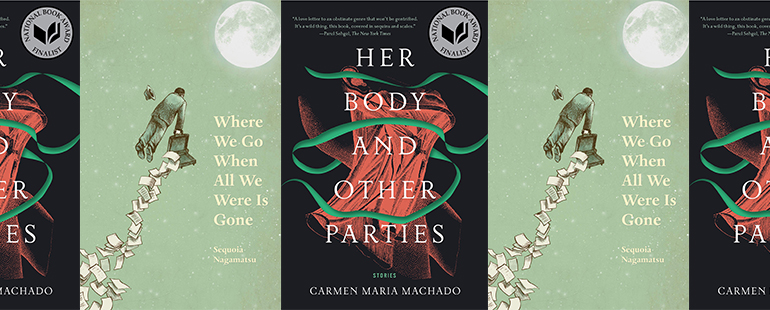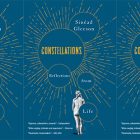Reading the Uncanny

A common sentiment online over the past few months has been a variation on how time seems to be moving both far too quickly and far too slow. On top of the sense that time has become an amorphous blob we must all push through, there is also a sense that 2020 is an incomprehensible year overall. A quick perusal of Twitter reveals memes listing all that has happened since January, ranging from the tragic and social-order shattering—like the global pandemic and the protests ongoing throughout the United States—to the just plain odd, like the brief invasion of killer wasps. The sheer rate at which things seem to be happening, compounded by the need for those who are able to self-isolate to stay at home, has left many feeling at a loss for words.
In many ways, 2020 has become an ineffable year whose twists thus far defy easy parsing through language. While we are still learning how to talk about all that is happening in the world right now, there is some literary precedence that might provide the basis for discussing the uncanny—defined by Sigmund Freud, in his 1919 book-length essay of the same name, as “that class of the terrifying which leads back to something long known to us, once very familiar”—nature of 2020. In the work of Carmen Maria Machado and Sequoia Nagamatsu, the uncanny elements that might be unsettling for readers are stand-ins for very familiar things: the complexities of interpersonal relationships and the hardships that some have while moving through the world in the bodies they were born with. As in Freud’s definition, the uncanny within these authors’ stories lead us right back to elements common to human experience.
In her wildly successful 2017 collection, Her Body and Other Parties, Carmen Maria Machado presents grounded, embodied characters navigating through situations or worlds that are somehow surreal, but often only slightly. The first story, “The Husband Stitch,” draws from the story of The Green Ribbon, and depicts women with ribbons tied to various parts of their bodies—around their necks, on fingers, around wrists or ankles. These ribbons draw curious attention from men, but the women accept them as part of their lives, though the protagonist repeatedly tells her lover to refrain from touching it or asking about it. Outside of the ribbons, the rest of the story lacks decidedly surreal elements. Thus, like the character’s husband, readers inevitably get pulled into the mystery of the ribbon: what does it mean? As if to rebuff the readers, too, the character responds to her husband’s questions about the ribbon by saying, “The ribbon is not a secret, it’s just mine.”
But the ribbon does stand for something. There are tantalizingly pointed details included in the text, like the fact that only women have the ribbons and that they are born with them. Machado, however, is able to bypass reductive readings of the story and, by extension, envelop a far broader range of experiences by leaning into the surreal image of the ribbon. The ribbon becomes a multi-leveled symbol that can encompass many elements of gendered experience. What the ribbons mean for each character in the story is always different, like the multicolored nature of the ribbons themselves. By using a fantastical, uncanny story element, Machado can therefore comment on the ineffable experienced by her many, different readers.
In his 2016 collection, Where We Go When All We Were is Gone, Sequoia Nagamatsu accomplishes a similar tackling of the ineffable by way of uncanny or unsettling narrative elements. While the majority of the stories within draw from traditional Japanese folktales, they are usually grounded in very modern settings, and the clash between the fantastical and a grittier realism manages to articulate human experience effectively. For instance, “Rokurokubi” is told through the perspective of the titular rokurokubi (ろくろ首), a classic creature from Japanese folklore who can stretch their neck to incredible length. The story follows the rokurokubi’s struggles with his marriage—both he and his wife have been keeping secrets from each other, causing strain. The folklore element of this story exaggerates the disconnect between the pair: as readers see the character’s head traverse the town through pipes and sewer lines, it seems utterly impossible for him to keep this type of secret from his wife for as long as he has. But he does. And readers are then left to consider what impact keeping such a secret has on both an individual and on a relationship. Most of us are not supernatural beings with necks that can stretch to impossible lengths, but many of us have felt the need to conceal something about our identities—things that may be just as significant to our sense of self—and have suffered consequences for our hiding.
Like the ribbon in Machado’s “The Husband Stitch,” the rokurokubi nature of Nagamatsu’s protagonist draws the reader’s attention to something ineffable while avoiding being restricted by real-world specifics. Rather than being limited to a singular defined experience, the ribbon or the rokurokubi can represent something larger; Machado’s ribbon can represent something about living as a woman without laying specific claim as to what that experience looks like. What readers are left with instead is an effect, a sense that we can relate to the character, no matter how seemingly fantastical their woes are.
The ribbons and the rokurokubi call attention to themselves for their fantastic nature but stand in for things that are grounded in our own world. Thus, the effect of the uncanny in literature can also highlight the things that also feel familiar in our daily lives, the things that we may tend to accept as given or that we no longer even think about critically. The status quo often feels very familiar to us, but that doesn’t necessarily mean that it is beneficial. Shifting the focus to uncover the things hidden in plain sight is an unsettling but necessary part of addressing histories of oppression and systemic failures.
The uncanny elements of speculative fiction are able to effectively articulate these feelings as well as the sense that there is no stable ground, that things that were once familiar to us are now deeply unfamiliar. Freud’s understanding of the uncanny, however, offers an alternative: the things that are terrifying to us in their seeming unfamiliarity actually do stem from things that are familiar to us. The world of 2020 is still the world of 2019, no matter how much more terrifying things seem now. While recent events have highlighted a staggering string of systemic failures, this is still the same world as before, which means that these systemic failures have always existed, even if they were pushed below the surface for many. The broader awareness of the uncanny thus offers an opportunity for change.



